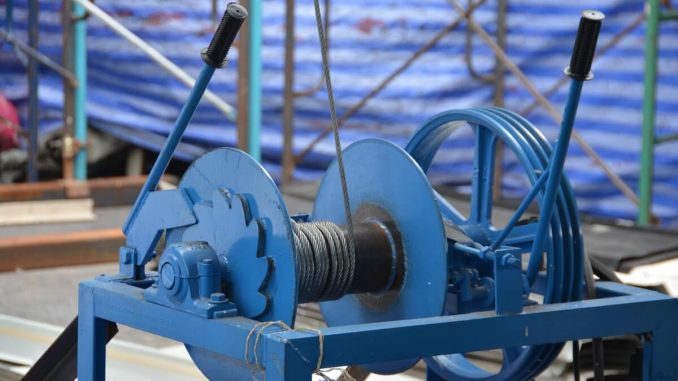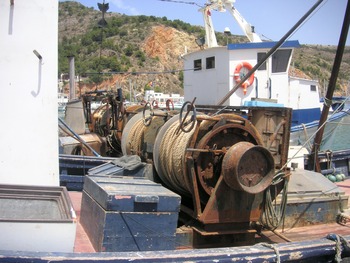
Winches have been a valuable tool for centuries, used across various industries and applications. Winches are essential for lifting, hauling, and carrying tasks in several industries, from labor-intensive construction to recreational off-roading. In this blog, we dive into the diverse world of winches, examining different types, their mechanisms, and the specific applications where they excel, helping you choose the perfect winch for your needs.
The Basics of Winches
What is a Winch?
A winch is a mechanical device designed to wind or unwind a rope or cable to move or lift heavy loads. It typically consists of a drum, where the rope or cable is wound and a motor or crank mechanism that powers the winding action.
Common Components
Winches comprise several essential components, including the drum, gear system, motor or power source, control switch, and braking system. Understanding these components is crucial for selecting the right winch for your intended use.
Electric Winches
How Electric Winches Work
Electric winches are powered by an electric motor, drawing power from the vehicle’s battery or an independent power source. They use a gearbox to control the winching speed and torque, providing precise control over the load.
 Applications
Applications
Electric winches are versatile and commonly used in off-road vehicles, recovery trucks, and trailers.
They are excellent in settings where a dependable power source is easily accessible, making them perfect for industrial and commercial uses.
Hydraulic Winches
How Hydraulic Winches Work
Hydraulic winches utilize a hydraulic motor powered by a hydraulic pump, which is typically connected to the vehicle’s power steering or hydraulic system. The hydraulic fluid pressure generates the force needed to operate the winch.
Applications
Hydraulic winches are known for their immense pulling power, making them suitable for heavy-duty industrial applications, marine operations, and large-scale vehicle recovery. When continuous operation and reliable pulling capacity are essential, they are frequently preferred.
Manual Winches
How Manual Winches Work
Manual winches are operated by hand-cranking a handle or lever, which rotates the winch’s drum and winds or unwinds the cable or rope.
Applications
In situations when a power source is not accessible or not viable, manual winches are frequently used. They are ideal for light-duty applications such as boat trailer winching, small vehicle recovery, and manual lifting tasks.
Worm Gear Winches
How Worm Gear Winches Work
Worm gear winches use a worm screw and worm gear to create a mechanical advantage, resulting in higher torque output. They offer self-braking capabilities due to the friction between the worm screw and gear.
Applications
Worm gear winches are preferred for applications where safety and control are crucial, such as elevating platforms, cranes, and some industrial equipment.
Planetary Gear Winches
How Planetary Gear Winches Work
Planetary gear winches utilize a set of gears that revolve around a central axis (sun gear). The multiple gears (planets) engage with an outer ring gear, resulting in high line speeds and a compact design.
Applications
Planetary gear winches are versatile and widely used in various industries, including off-road vehicles, construction, and marine applications. They offer a perfect balance between speed and power and are favored for their reliability and efficiency.
Air Winches
How Air Winches Work
Air winches are powered by compressed air and utilize an air motor to generate pulling force. The winching speed and force can be controlled by adjusting the air pressure.
Applications
Air winches are commonly used in hazardous environments where electrical or hydraulic systems are not suitable. They find applications in the mining industry, offshore operations, and areas where flammable gases are present.
Capstan Winches
 How Capstan Winches Work
How Capstan Winches Work
Capstan winches consist of a vertical drum with a rotating axis, where the rope or cable is wound.
They are typically manually operated by wrapping the rope around the drum and applying force to rotate it.
Applications
Capstan winches are widely used in marine and shipboard operations for tasks such as mooring, towing, and anchor handling. They offer precise control and are easy to operate in confined spaces.
Factors to Consider When Choosing a Winch
Load Capacity
Ensure the winch’s load capacity matches or exceeds the heaviest load you plan to pull or lift.
Line Speed
Consider the line speed required for your specific application. Faster line speeds are beneficial in some scenarios, while slower speeds provide more control in others.
Duty Cycle
Understand the duty cycle of the winch, which indicates how long it can operate continuously without overheating.
Environmental Conditions
Choose a winch that can withstand the environmental conditions it will be exposed to, including temperature, moisture, and dust.
Conclusion
Winches come in various types and designs, each offering unique advantages for specific applications. Whether you need a reliable winch for off-roading adventures, industrial lifting, or marine operations, understanding the different types of winches and their applications is essential in making the right choice. By selecting the perfect winch for your needs, you ensure efficient operations, enhanced safety, and optimal performance in your winching tasks.

Leave a Reply